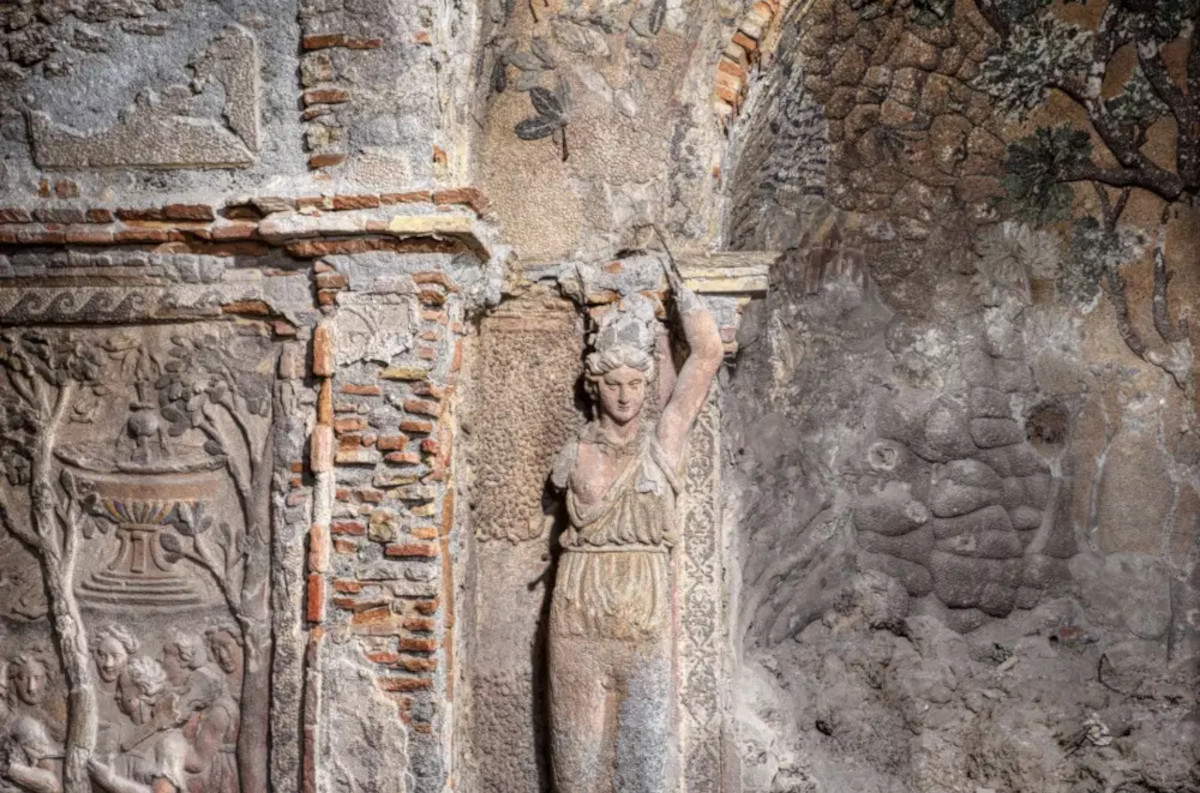After being closed for more than 50 years, the Grotto of Diana at Villa d’Este in Tivoli will become accessible to visitors again starting May 6. The nymphaeum has been completely restored in a two-year intervention thanks to a collaboration between the Istituto autonomo Villa Adriana e Villa d’Este - Villae and the Fendi fashion house.
Located in one of the most scenic and fascinating views of Villa d’Este, the Grotto of Diana is a cruciform chambered nymphaeum located in the Passeggiata del Cardinale and created between 1570 and 1572 by Paolo Calandrino, probably inspired by the original design of Pirro Ligorio, architect of the Villa and garden. Dedicated to the goddess Diana, the grotto was conceived as a space of contemplation and harmony, in keeping with the Mannerist aesthetic of the late 16th century. Inside, the decorations depict scenes from Ovid’s Metamorphoses, along with mythological figures such as Tritons, Nereids and Caryatids canefore. The entire surface is covered with rich decoration in different materials, such as stucco, stained glass, shells, glazed faience, and ornamental stones.
Diana’s Grotto provided an exemplary model for the design of nymphaea and artificial grottoes in 16th- and 17th-century European aristocratic gardens. Cardinal Ippolito II d’Este himself loved to walk through these evocative spaces, which embodied the essence of Mannerist culture, with its balance between nature, art and myth.
The recent restoration has restored splendor not only to the interior decorations, but to every structural aspect of the nymphaeum. Among the new features of the intervention is the installation of a glass window in the loggia facing Rome: a functional solution that protects the environment from the atmospheric agents-particularly the wind-that for centuries threatened the integrity of the decorative materials.
“This intervention, too, aims to explore and decode the infinite suggestions of Villa d’Este, highlighting how this place continues to emanate its magnificent beauty, revealing at times the sophisticated cultural project that was at its base,” explains Villa Adriana and Villa d’Este Institute Director Andrea Bruciati. “With this action we seek to counteract the loss and oblivion that often distinguishes our heritage, and the recovery of the Grotto of Diana ensures that this wealth becomes available again to the community. Art history is also a cognitive process that feeds on these ’re-emergences,’ reconfiguring present and past for future generations.”
“The restoration of Diana’s Grotto at Villa d’Este is an act of love for Fendi, the most recent in a centuries-long journey of protecting and enhancing Italy’s cultural heritage, which culminates this year with the celebration of our centenary,” said Silvia Venturini Fendi, Artistic Director Accessories and Men’s Collections at the maison. “This work represents for us a further investment in the future that starts from the memory of the past: a commitment aimed at preserving the beauty and history of our country,” she concluded.
 |
| Tivoli, Villa d'Este reopens after more than 50 years of closure and two of restoration its Grotto of Diana |
Warning: the translation into English of the original Italian article was created using automatic tools. We undertake to review all articles, but we do not guarantee the total absence of inaccuracies in the translation due to the program. You can find the original by clicking on the ITA button. If you find any mistake,please contact us.